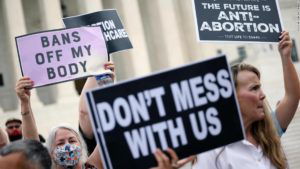
Measuring And Understanding Medical Errors May Reduce Preventable Harm or Death
Apr 16, 2013
Cleveland, OH (Law Firm Newswire) April 15, 2013 – One in fifteen medical mistakes leads to the death of a patient.
“If doctors had a good grasp on the ability to report, measure and understand their errors and how they affect the bigger picture, it may reduce the number of medical mistakes in the nation’s hospitals. Or it may not, as doctors are human and humans are not always comfortable with admitting their mistakes, even if it means obfuscation to retain their reputation,” suggested Christopher Mellino, a Cleveland medical malpractice lawyer.
The events in question are not referred to as mistakes, or errors or screw ups, or poor judgment. They are called ‘never events,’ largely due to the fact that they never should have happened. However, they do happen, and more often than we would like to admit with any degree of comfort.
Recent surveys indicate that on average, there are 4,000 incidents where a surgeon leaves a calling card behind in a patient’s body cavity —- a sponge, towel or surgical instrument. Not all incidents involved leaving foreign objects in a patient. The figure also represents operations on the wrong body part or the wrong patient. Many feel the number is on the low side, largely because it is based on reported malpractice claims and also due to the fact that many medical mistakes do not get reported or even discovered.
“If the mistakes are preventable, then why are they happening?” asked Mellino. The answer may lie in the human condition —- something no one really has much control over, except the person involved in making the error. Even with safety protocols in place, pre and post surgery checklists and instrument counts, errors happen, as a result of humans not paying attention, acting too fast, not doing what is required to save time, or just not doing it because they do not feel like it.
Would an accurate and public accounting of all surgical errors make a difference? Some feel that in order to fix a problem the scope of it needs to be measured. While that makes sense, there is still the human element to contend with when it comes to timely, accurate and honest error reporting. “Some suggest third-party chart review is effective to find triggers that caused an error to happen. The Institute for Healthcare Improvement has used something called the Global Trigger Tool, which has a 90 percent accuracy rate in determining never events,” outlined Mellino.
What is next in the health care field when it comes to dealing with events that should never have happened in the first place? Can human mistakes ever be completely eradicated in the health care system? “Likely not,” suggested Mellino, “however that is why medical malpractice attorneys are the voice for the victims of those never events. Someone needs to be held accountable for them.”
To learn more or to contact a Cleveland medical malpractice attorney, or visit http://www.mellinorobenalt.com.
Mellino Robenalt LLC
200 Public Sq., Suite 2900
Cleveland, Ohio 44114
Call: (216) 241-1901




